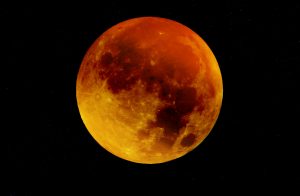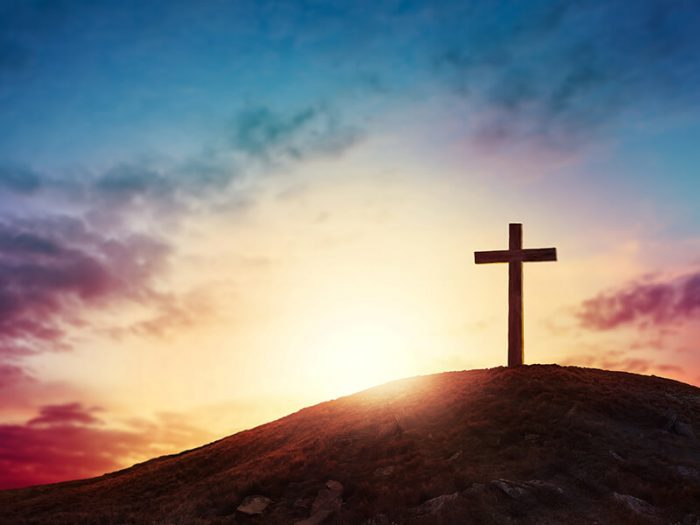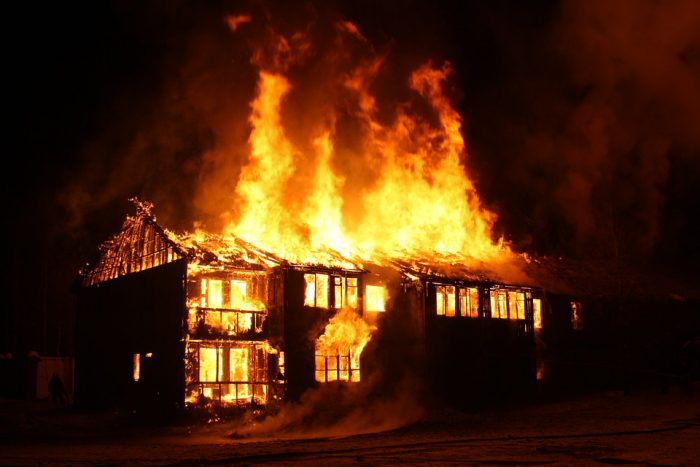
On the night between Sunday, January 20, 2019, and Monday, January 21, 2019, all of North America will be able to witness the entirety of a total lunar eclipse for the first time in almost 10 years. Portions of the continent have been able to see total eclipses since then, but the last time the entire continent was able to view the entirety of the eclipse was in January of 2000. This is an exciting enough event for amateur astronomers, but it is made all the more exciting by the way three celestial events will be overlapping in January 2019.
January’s eclipse is a super blood wolf moon. The title is a combination of the overlapping astronomical phenomenon occurring in January 2019. The first full moon of the year is called a wolf moon. A supermoon, officially called a perigee syzygy, occurs when the full moon phase of the moon coincides with the perigee of the moon’s orbit. The perigee is the point in the moon’s orbit when it is closest to Earth. When this moment overlaps with a full moon, the moon appears to be enlarged in the sky. A super wolf moon, then, would describe the unusual event when the first full moon of winter occurs when the moon is closest to Earth.
Wolf moons happen every year, and supermoons tend to occur three or four times a year. Blood moons, meanwhile, are considered to be a bit more exciting. A blood moon refers to the reddish cast that appears on the moon during a lunar eclipse. While there are between two and four lunar eclipses every year, it is unusual for a region to be able to see the penumbral, partial and total phases of an eclipse. The vast majority of North America, for example, last viewed the entire eclipse in January 2000, and North America will not enjoy that view again until March 2025. It will be even longer until a lunar eclipse takes place on a supermoon or wolf moon, much less both simultaneously.
While the unusual overlap of celestial phenomena has astronomers excited, it has created a great deal of anxiety for doomsday predictors. They have argued that January 2019’s unusual eclipse is actual a sign of the end times as described in Revelation and Joel.
Pastor Paul Begley has insisted that the January 2019 eclipse is a sign of the end times. “Obviously, these apocalyptic signs in the heavens are pointing to a catastrophic event that is just on the horizon,” he said.
He has admitted, however, that the January 20-21 eclipse does not mean that the world will end on January 22, but Begley does insist that then end is near. “We don’t know when,” he said. “Just because you’re going to have a super blood moon on January 20 and 21 doesn’t mean that January 22 all hell’s going to break loose, but then again, it doesn’t mean it won’t… There’s these signs that are starting to be revealed [and] the urgency is now right now. The urgency has begun.”
Scientists, meanwhile, have stated that the end of the world is unlikely to take place anytime soon. It is true that no one can say for certain when the end will come, but given that doomsday predictions appear around every lunar eclipse, the odds appear to be in the favor of Earth’s continued existence. In the event that the doomsayers are correct, it still makes sense to get outside Sunday night and take a look at the lunar eclipse. At least people will have seen something beautiful before the end.


